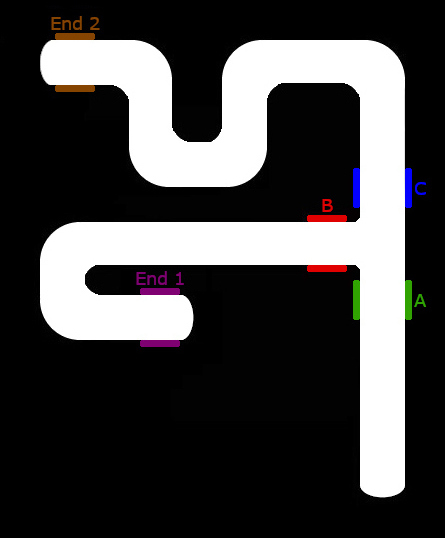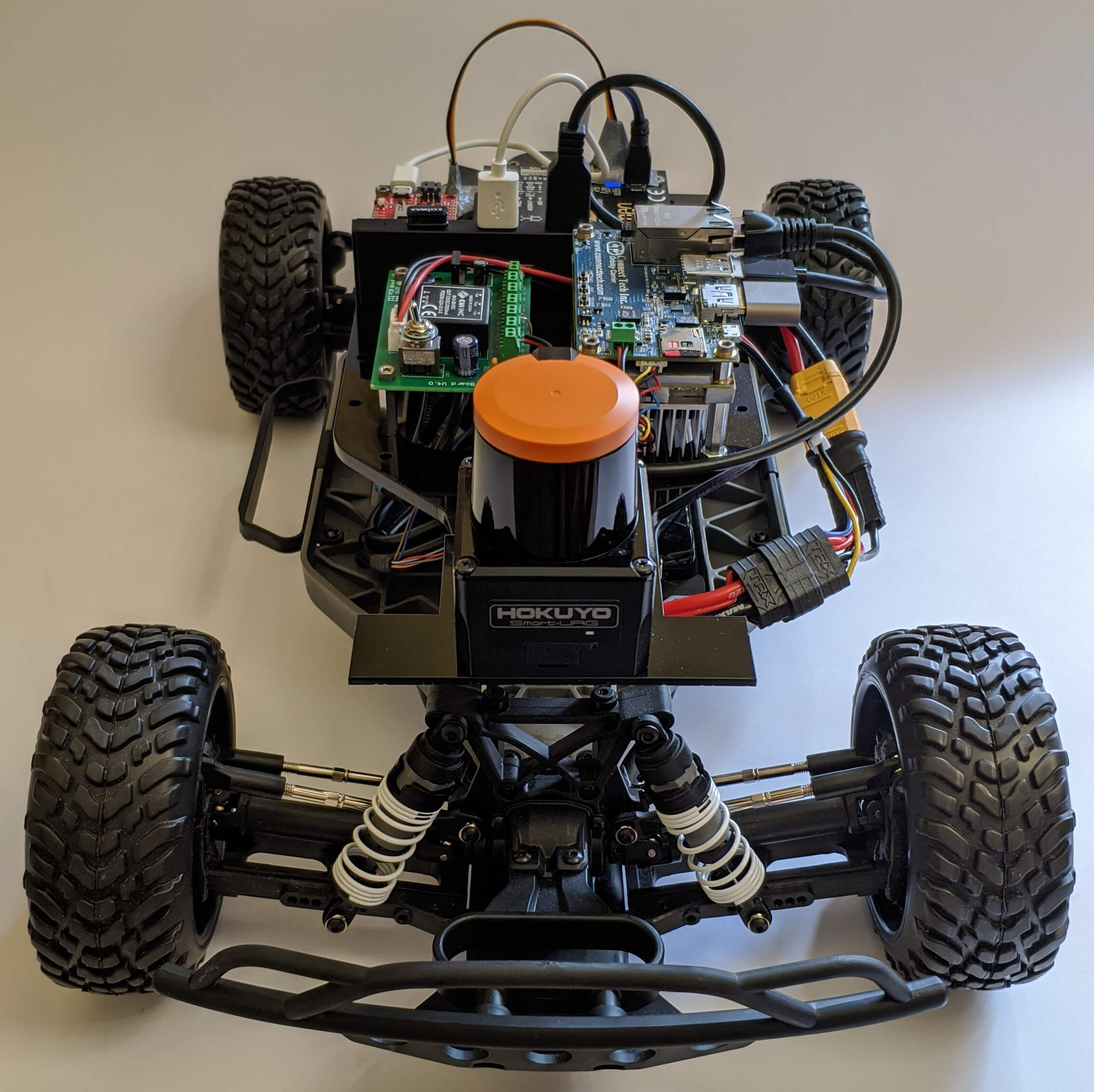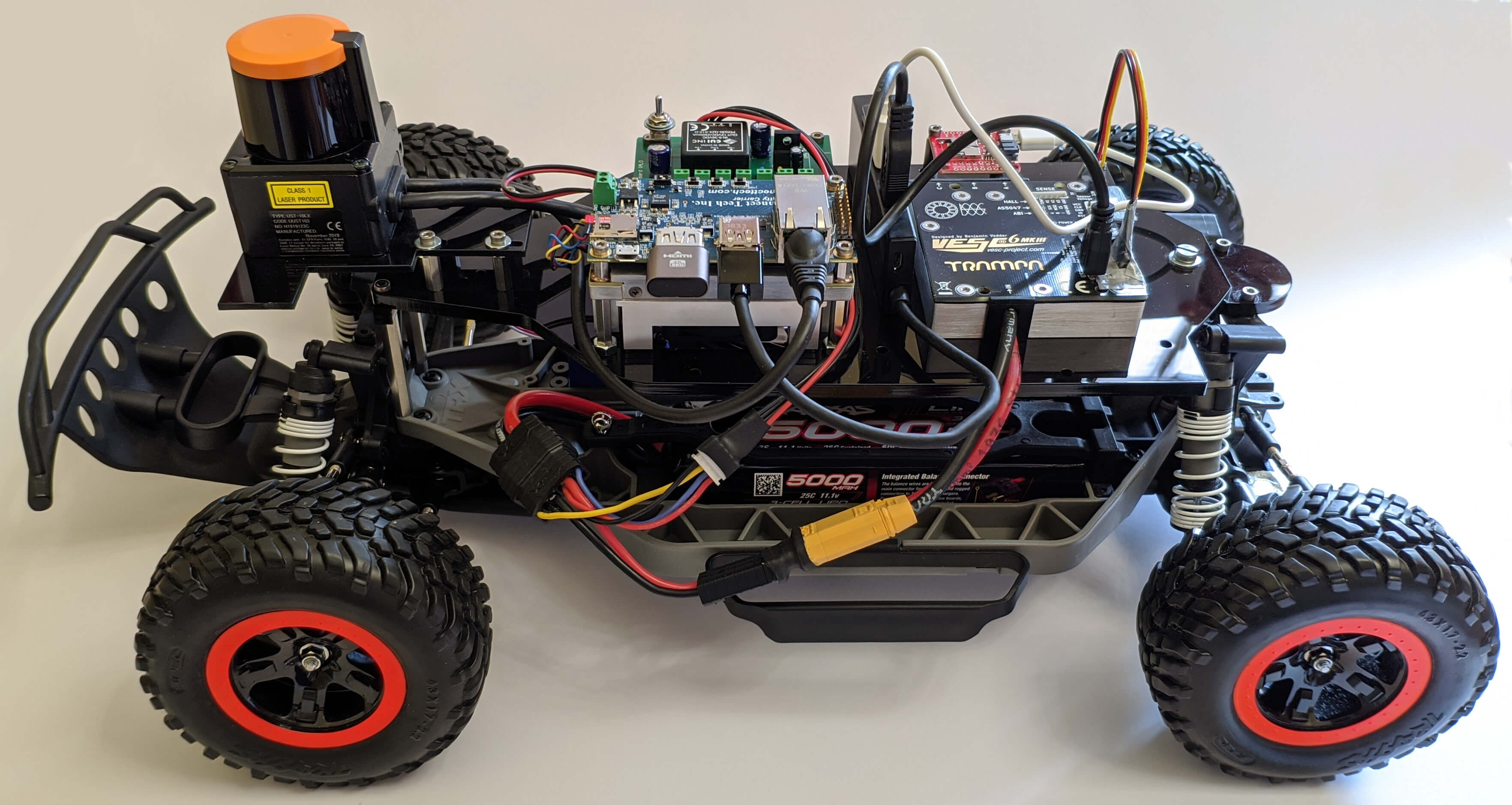Implementation of a BDI driver agent that uses BDI plans for high-level path planning and Reinforcement Learning for low-level control.
This work is based on the Jason-RL framework and the f1tenth-rl project. You can find additional useful documentation in those repos.
If you use this repo, please cite my master's thesis.
Integrating BDI and Reinforcement Learning: the Case Study of Autonomous Driving
Michael Bosello. [URL] [Slides] [Video]
@mastersthesis{amslaurea21467,
author = {Michael Bosello},
title = {Integrating BDI and Reinforcement Learning: the Case Study of Autonomous Driving},
url = {http://amslaurea.unibo.it/21467/},
school = {University of Bologna},
year = {2020},
}
The Jason-RL framework allows the development of BDI agents that can learn some plans, called soft-plans, using Reinforcement Learning. The aim is to mix plans defined by the developer (hard-plans) and soft-plans.
In this project, we want to exploit the mixed-plans approach for autonomous driving.
The BDI agent will handle the high-level planning of the path, deciding which direction should be taken. The RL plans will handle the low-level control, using sensors and actuators to actually move without incident.
This approach is promising as RL struggles in long-term planning meanwhile humans struggles in hard-coding of low-level control. In this way, we can benefit from the strengths of both methods.
As a first step, we defined and trained a BDI agent (agt/car_driver.asl) that drives in a circuit, without high-level decisions, to test the RL control capabilities of the framework.
As a second step, we defined and trained a BDI agent (agt/car_driver_intersection.asl) that drives in a track with an intersection. There are two targets (randomly alternating), and the agent has to choose the right direction at the intersection to reach the proper target. The BDI hard plans define the high-level directions according to the agent position and the target to be reached. The learned soft-plans are three: follow_street, the car follows the path until a new known position is reached (see the map below); go_forward, the car goes straight at the intersection; turn_left, the car turns to the left at the intersection. The burden to perform actions at the intersection is given to soft-plans because we cannot blindly move forward or move left as even a small perturbation will cause a crash if not fixed.
f1tenth-rl can be used on both the real f1tenth car and on its simulator.
Currently, this project has been tested only on the simulator for problems of space. We aim to bring the experiment on the physical car soon.
[Paper] [Slides] [Training on the physical car Video]
Implementation of DQN for autonomous racing using lidar data
It is designed to running on f1tenth cars
ROS is used to control the car motor, servo and acquire the lidar data
It can be used on both the real f1tenth car and on its simulator
The DQN implementation provides several techniques to improve performances like target network, replay buffer, state history, prioritized sampling. It has various parameters (see below) that one can modify to fit the specific environment. There are also various options to pre-process lidar data. One can use lidar data directly or represent them as images containing the environment borders. Velocity can be added to to the state
Model saving, replay buffer serialization, and tensorboard logging are provided
This project is a PoC of the framework presented in
From Programming Agents to Educating Agents – A Jason-based Framework for Integrating Learning in the Development of Cognitive Agents
This is an integration of BDI agents and Reinforcement Learning. It is based on Jason (Actually, it is a JaCaMo project).
The basic idea is that a developer could write some plans and let the agent itself learn other plans and use them in a seamless way. This is not only for a specific ad hoc problem but as a general feature of the agent platform.
In short, the aim of the framework is to enable the developer to define the learning components with high-level abstractions as the BDI ones are. Then, these informations injeced by the developer are used by the agent to learn itself how to fulfill some tasks.
The work of the developer moves from write plans to define a learning phase.
Build the project
./gradlew build
Stop previous istances
./gradlew --stop
Launch the f1tenth simulator:
- Go to the working directory of the simulator (/simulator)
$ source devel/setup.bash
$ roslaunch f1tenth_simulator simulator.launch
Run the python agent server
./gradlew runPythonAgent
Run the python environment server
./gradlew runPythonEnv
Run the agent system:
./gradlew run
-
Install ROS Melodic (desktop-full)
-
Install the dependencies
$ sudo apt-get install python3-pip python3-yaml$ pip3 install rospkg catkin_pkg$ sudo apt-get install ros-melodic-ackermann-msgs -
Optional dependencies
You need to install these packets only if you want to use the relative function
To visualize the images built from lidar data (lidar-to-image = True, show-image = True) you need opencv:
$ pip3 install opencv-pythonTo use compression of replay buffer (--compress-replay):
$ pip3 install blosc -
Setup the car simulator:
sudo apt-get install ros-melodic-map-server ros-melodic-joy$ mkdir -p simulator/src$ cd simulator/src$ git clone https://github.com/f1tenth/f1tenth_simulator.git$ cd ../$ catkin_makeChange the map (see below)
-
Install tensorflow 2.x.y
$ pip3 install tensorflow
-
Install Java (>= 11)
sudo add-apt-repository ppa:linuxuprising/java sudo apt update sudo apt-get install default-jre
-
install the python dependencies
pip3 install flask flask-jsonpify flask-restful
In the end, the agent successfully learned a control policy, based on lidar data, to drive in a track with and without an intersection. Tensorboard logging and trained models of experiments are provided in the release section. Maps used in simulated experiments are available in the /map directory. If you want to use these maps, you must edit simulator.launch (see below) or copy the one provided in /map
If you run the python RL agent direcly with python instead of using gradle, you can change several parameters as command-line arguments. Use -h to see the argument help. Alternatively, You can check the list of arguments and change their default value in rl_car_driver.py
You can use the --model argument to load a trained model, e.g.:
from python/agt/
python3 tf_env_rest.py --model=./run-bdi-hairpin-track-simulator-cnn1d/models
-
The guide of the simulator is in the readme simulator/src/f1tenth_simulator/README/md
-
You may want to change the simulator options, check out simulator/src/f1tenth_simulator/params.yaml
-
If you want to change the track, you must edit simulator/src/f1tenth_simulator/launch/simulator.launch
Search for
<arg name="map" default="$(find f1tenth_simulator)/maps/levine.yaml"/>Change levine (the default map) with one map present in the folder simulator/src/f1tenth_simulator/maps


